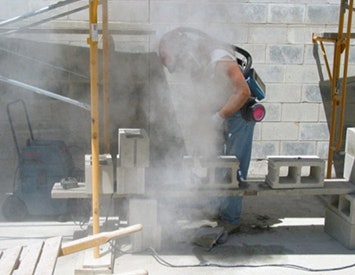 Credit: New Jersey Department of Health
Credit: New Jersey Department of HealthOn March 24, U.S. Secretary of Labor Thomas Perez issued the final workplace exposure standard for crystalline silica, which will soon be published by the U.S. Occupational Safety and Health Administration (OSHA). The new standard cuts the current permissible exposure limit (PEL) in half, reducing the exposure limit from 100 micrograms per cubic meter of air to 50 micrograms per cubic meter of air over an eight-hour period.
“Instead of crafting new and innovative ways to get more firms to comply with the current silica standard, which we know would save even more workers each year, administration officials appear to have instead opted to set a new standard that is well beyond the capabilities of current air filtration and dust removal technologies,” says Stephen E. Sandherr, CEO of the Associated General Contractors of America (AGC), EHS Today reports.
“Wishing firms could meet this new but unattainable standard will undoubtedly deliver many positive headlines for the administration, but it will be all but impossible for most construction firms to comply with this new rule. We will continue our exhaustive review of this new regulation, consult with our members and decide on a future course of action that will best serve the health and safety of millions of construction workers across the country.”
The National Stone, Sand and Gravel Association (NSSGA) issued a press release stating that full compliance with, and enforcement of, the current general industry PEL for quartz is the best and most cost-effective way to protect silica-exposed workers.
“The current exposure limit sufficiently protects worker health when fully adhered to and enforced,” says Pam Whitted, NSSGA senior vice president of government and regulatory affairs in the press release. “There is no sound science to show that lowering it to the levels mandated by this rule would meaningfully improve worker protection, but it will add tremendous expense for employers and cost jobs.”
According to the NSSGA, reports from the U.S. Centers for Disease Control and Prevention show that silicosis mortality fell by more than 90 percent between 1968 and 2010 with the current standards in effect.









